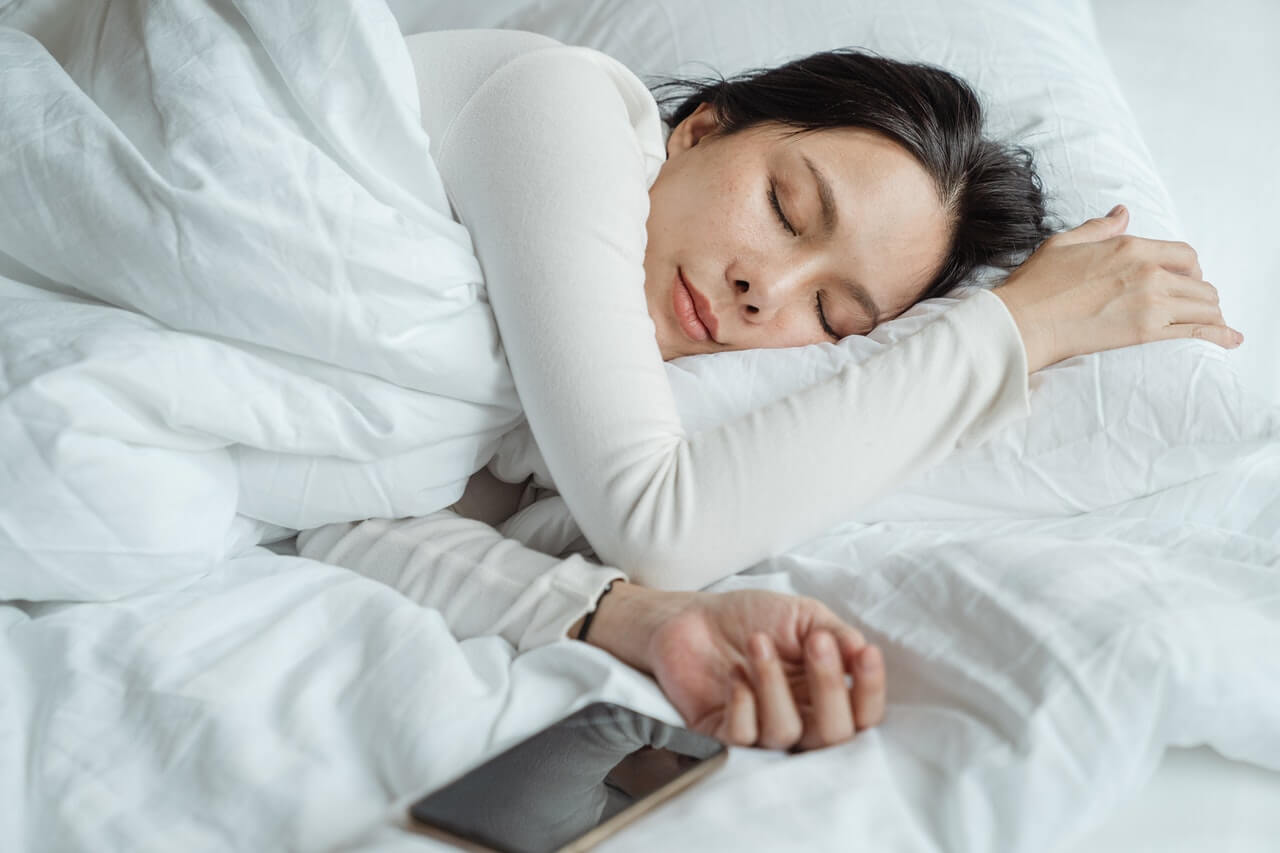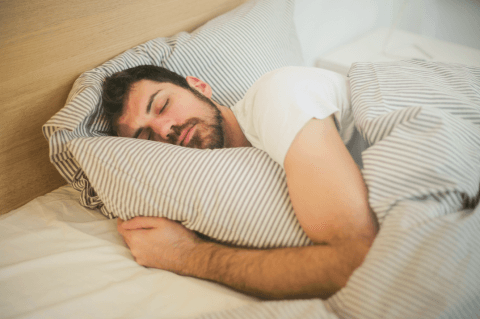Types of Sleeping Positions:
There are three main types of sleeping positions people most often use: side sleeping, back sleeping, and stomach sleeping. Regardless of your preferred sleeping position, the key is to maintain a neutral spine as much as possible. It’s also important to keep the right and left sides of your body as symmetrical as possible to reduce strain on one side. Here are some tips for improving your sleeping posture depending on your preferred sleeping position.
#1: Sleeping on Your Side
- To keep your head in a neutral position, make sure that your pillow fills and supports the curve of your neck.
- To prevent your head from tilting down towards your bed, make sure your pillow is not too low and that your ears are stacked in a straight line.
- To prevent your head from tilting upwards, make sure your pillow is not too high and that your ears are again stacked in a straight line.
- You can place a pillow between your knees and ankles to help keep your pelvis and spine in a neutral position while also helping your hips stay stacked in a straight line and preventing one leg from dropping forward.
- You can also place another pillow underneath your top arm so that you do not rotate your mid-back too much and add strain to your top shoulder.
#2: Sleeping on Your Back
- To keep your neck in a neutral position, make sure your pillow fills and supports the curve of your neck properly.
- Don’t let your head tilt up as this indicates that your pillow is too high
- Don’t let your chin poke up either, as this would indicate that your pillow is too low
- Place a pillow under your knees to help prevent any strains in your lower back
#3: Sleeping on Your Stomach
Sleeping on your stomach is not recommended for a number of reasons. For instance, sleeping on your stomach increases your low back sway and aches. It also means your neck has to always be twisted in one direction for most of the night which can cause uneven pressure and balance on your neck joints. If you absolutely have to sleep on your stomach, try these tips to help limit pain.
- Place a smaller pillow under your stomach to reduce low back sway and arch
- Place a thin pillow under your head to reduce neck twist
- Try to avoid resting your head on your arms because this may cause shoulder pain

Preventing Sleeping Pain
Ideally, you will wake up each morning with minimal to no pain but that is not always the case. The three most common areas of pain that are related to poor sleeping posture including: back pain, neck pain, and hip pain. These aches occur when you are not sleeping in a position that puts minimal stress on your body and not keeping your joints or muscles in resting neutral positions. Here’s why you may be experiencing these three types of pain in the morning:
Pain #1: Back Pain
Finding a comfortable sleeping position can be difficult if you experience back pain. Ideally, the natural curve of your spine will be maintained throughout the night so you want to find a mattress that will support your lower back without causing stiffness. Avoid mattresses that are too soft because, although comfortable at night, they will let you sink too much over time and interrupt the curve of your spine. For many patients, side sleeping helps keep their spine in a more natural alignment. However, if you do sleep on your back, try placing a pillow under your knees to help keep your lumbar spinal curve throughout the night.
Pain #2: Neck Pain
Your pillow is most likely the culprit of your neck pain. If you’re a side sleeper, try to avoid letting your neck fall excessively to the side with a pillow that is too low. You also want to prevent your neck from being too elevated which will happen if your pillow is too high. If you find yourself putting your arm under your pillow, then it is likely too low. Try your best to avoid sleeping on your stomach as much as possible.
Pain #3: Hip Pain
This is a common problem for side sleepers. You probably sleep most of the night with one leg crossed over your body which can place extra pressure on your hips. This, plus a mattress that is too firm, will compromise the hip on the underside of your body. Try placing a pillow under your knee while sleeping on your side to maintain a neutral hip alignment.

—
We hope this blog helps you better understand why you may be experiencing pain in the morning and how you can go about preventing further pain. Remember that working on your sleeping posture is so important to not only relieve pain, but to also help you get a better night’s sleep and improve your overall health. If you need help fixing your sleeping posture, we have plenty of Physiotherapy Services in Kitchener (Lancaster and Driftwood), Baden, or Waterloo to help you get back to living your life pain-free – contact our team with any questions you have!
Want more lifestyle advice on how to improve your overall health and wellness? Contact our Livewell Health and Physiotherapy Kitchener (Lancaster and Driftwood), Baden, or Waterloo teams to get more information and book your next appointment. You can also reach out to us by email or social media and one of our team members would be more than happy to answer any of your questions! All of our practitioners have more tips and expert guidance to help improve the overall quality of your life.

